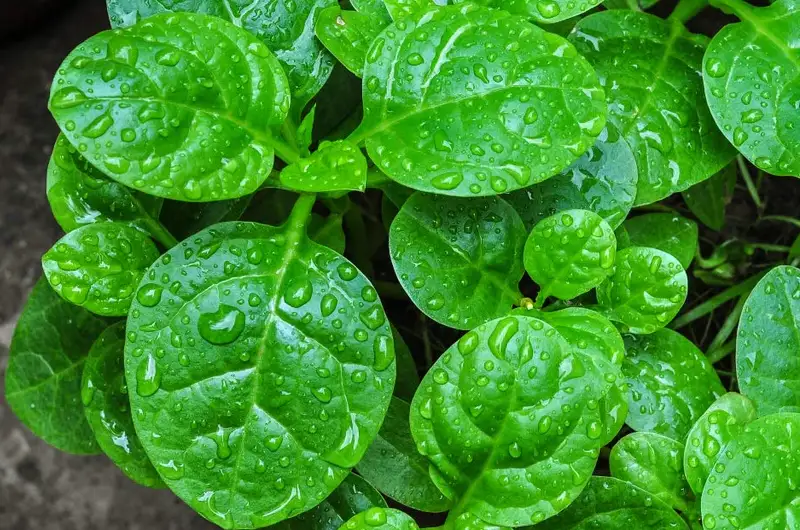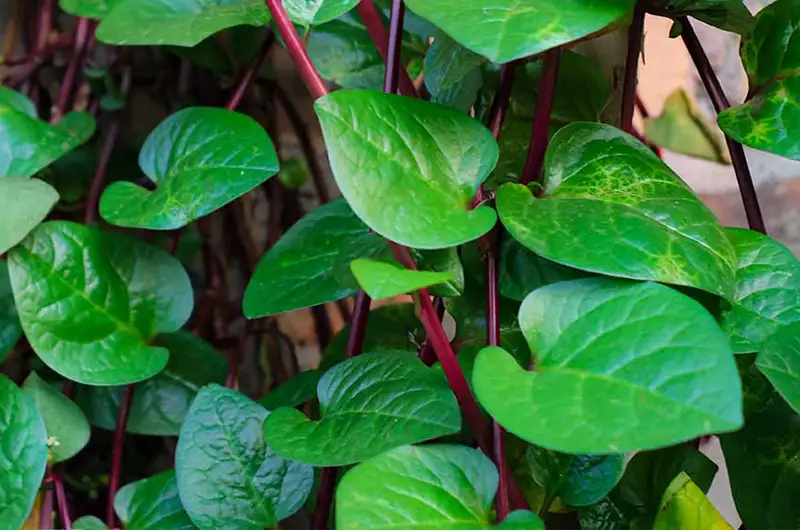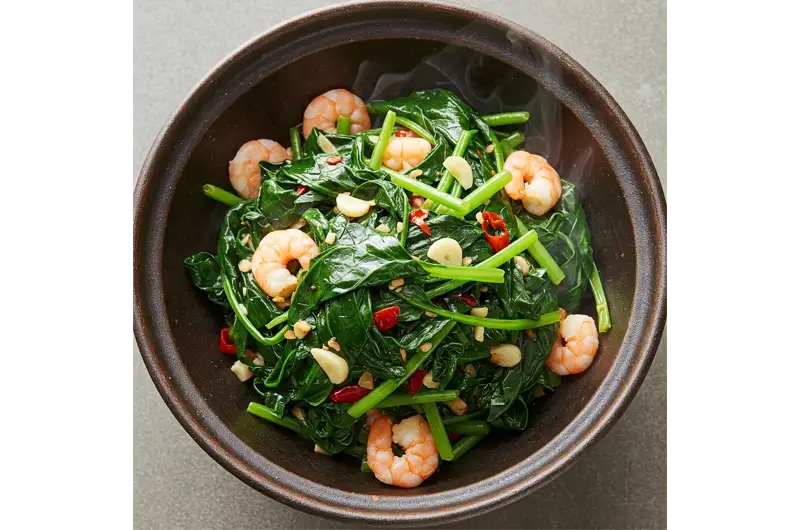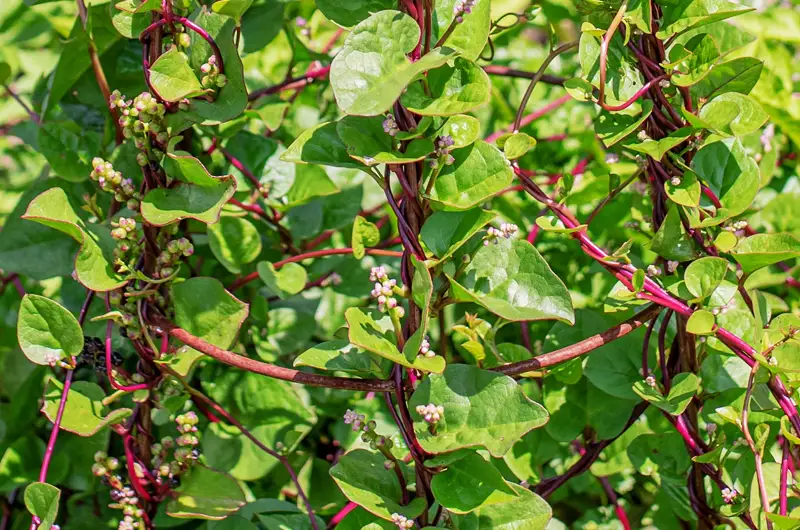Often mistaken for true spinach, Malabar spinach (Basella alba or Basella rubra) is a versatile tropical vine prized for its succulent leaves and stems. Thriving in heat where regular spinach bolts, this leafy green offers a unique texture and a wealth of nutritional advantages. Dive into this guide to explore the impressive Malabar Spinach benefits, its culinary applications, role in the food industry, and other fascinating uses you might not know about.
What Exactly is Malabar Spinach?
Malabar spinach, also known as vine spinach, Ceylon spinach, or Indian spinach, is not botanically related to true spinach. It’s a fast-growing perennial vine (often grown as an annual) belonging to the Basellaceae family. Its leaves are thick, heart-shaped, and glossy, with a slightly mucilaginous texture when cooked, similar to okra.

Varieties and Appearance
There are two main species:
- Basella alba: Features green stems and lush green leaves.
- Basella rubra: Distinguished by its striking reddish-purple stems and green leaves, often grown ornamentally as well.

Unpacking Malabar Spinach Benefits Nutritionally
This leafy green is more than just filler; it’s a nutritional powerhouse. Understanding its components highlights the core Malabar Spinach benefits.
Rich Source of Vitamins
- Vitamin A: Crucial for good vision, immune function, and skin health. Malabar spinach provides a significant amount of beta-carotene, which the body converts to Vitamin A.
- Vitamin C: A potent antioxidant that supports the immune system, aids collagen production for healthy skin, and enhances iron absorption.
Packed with Essential Minerals
- Iron: Vital for preventing anemia and carrying oxygen in the blood. Pairing Malabar spinach with Vitamin C sources further boosts iron uptake.
- Calcium: Important for strong bones and teeth, muscle function, and nerve signaling.
Fiber and Antioxidants
Malabar spinach is a good source of dietary fiber, promoting digestive health and regularity. It also contains various antioxidants that help combat oxidative stress in the body.
Health Advantages Linked to Malabar Spinach Consumption
The nutrients found in Malabar spinach translate into several tangible health advantages.
Supporting Your Immune Function
Thanks to its high Vitamin C and Vitamin A content, regularly including Malabar spinach in your diet can contribute to a stronger immune system, helping your body fend off infections.
Promoting Healthy Vision
The significant amount of Vitamin A (via beta-carotene) directly supports eye health and can help prevent age-related macular degeneration and other vision problems.
Aiding Digestion and Gut Health
The dietary fiber in vine spinach helps maintain bowel regularity and supports a healthy gut microbiome. The mucilaginous quality can also be soothing to the digestive tract for some individuals.
Bone Health Booster
With its contribution of calcium, Malabar spinach plays a role in maintaining bone density and strength.
Culinary Delights: Cooking with Malabar Spinach
Malabar spinach is incredibly versatile in the kitchen, particularly popular in Asian and African cuisines.

Popular Malabar Spinach Dishes
- Stir-fries: Its leaves and tender stems hold up well to high heat. Combine with garlic, ginger, soy sauce, and other vegetables or proteins.
- Soups and Stews: The leaves wilt down nicely and add body to soups and stews. The mucilage acts as a natural thickener. Common in Filipino dishes like Utan Bisaya or Indian curries.
- Curries: It absorbs flavours beautifully in coconut-based or lentil-based curries.
- Steamed or Blanched: Simply steamed and served with a dressing or sauce.
- Salads (Use Sparingly): Young, tender leaves can be used raw in salads, but the texture might not appeal to everyone. Blanching briefly can improve palatability for raw preparations.
Tips for Preparation
- Wash leaves and stems thoroughly.
- Use both the leaves and the tender parts of the stems. Thicker stems might need slightly longer cooking time.
- Be mindful of its thickening properties in soups and stews due to its mucilage. Add it later in the cooking process if you prefer less thickening.
Malabar Spinach in the Food Industry
While not as commercially widespread globally as common spinach (due to its shorter shelf life and unique texture), Malabar spinach is a significant crop locally and regionally, especially in tropical climates where it thrives.
- Local Markets: Commonly found fresh in markets across Asia and Africa.
- Potential Thickener: Its mucilaginous properties give it potential as a natural food thickener, although this is not yet widely exploited commercially.
- Specialty Produce: In Western markets, it’s often found in Asian grocery stores or as specialty produce.
Beyond the Plate: Other Potential Uses of Malabar Spinach
The benefits and uses of this plant extend beyond nutrition.

Ornamental Value
Especially the Basella rubra variety with its vibrant purple stems and lush leaves, Malabar spinach is often grown as an attractive, edible ornamental vine on trellises, fences, or in hanging baskets.
Natural Colorant
The deep purple berries produced by Malabar spinach (particularly Basella rubra) contain potent pigments. Historically and potentially, these can be extracted and used as a natural food colouring agent or dye, offering an alternative to synthetic dyes.

Quick Summary: Why Embrace Malabar Spinach?
Malabar spinach is a heat-tolerant, easy-to-grow leafy green packed with Malabar Spinach benefits. It’s rich in vitamins A and C, iron, and calcium, supporting immunity, vision, bone health, and digestion. Its versatility in stir-fries, soups, and stews, combined with its potential ornamental and colorant uses, makes it a truly remarkable plant.
Frequently Asked Questions (FAQ)
Is Malabar Spinach slimy when cooked?
Yes, Malabar spinach releases a mucilage when cooked, similar to okra, resulting in a slightly slimy texture. This property helps thicken soups and stews. Blanching briefly can reduce this effect if desired.
Can you eat Malabar Spinach raw?
Young, tender leaves can be eaten raw in moderation, typically in salads. However, many people prefer it cooked due to its texture.
How is Malabar Spinach different from regular spinach?
They belong to different plant families. Malabar spinach is a vine that thrives in heat, while regular spinach is a cool-season crop. Malabar spinach has thicker, fleshier leaves and a mucilaginous texture when cooked, unlike the tender, non-slimy texture of common spinach. Their nutritional profiles also differ slightly.
Read More about Malabar Spinach: Growing Malabar Spinach: Guide to Planting and Care
Latest Posts:


